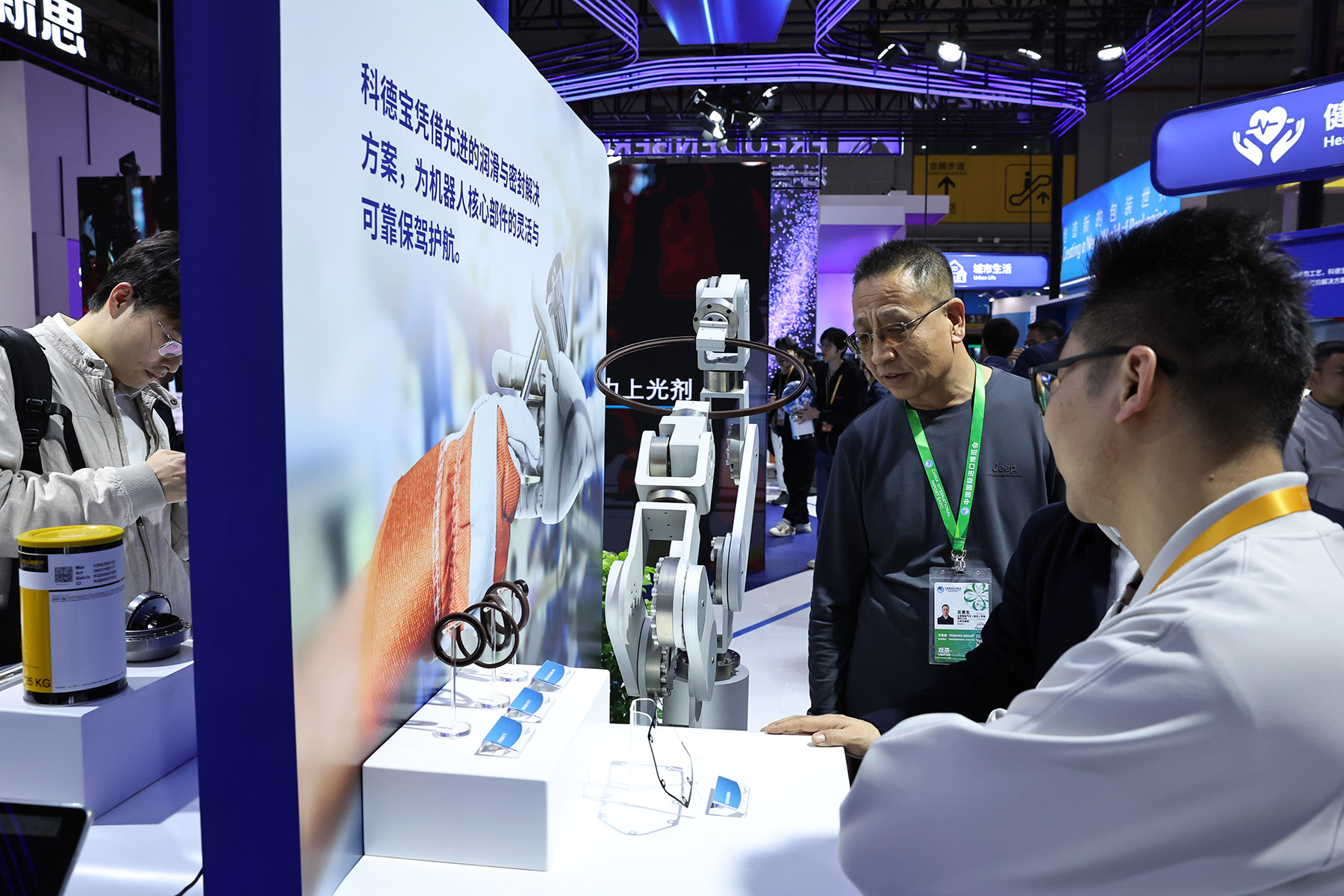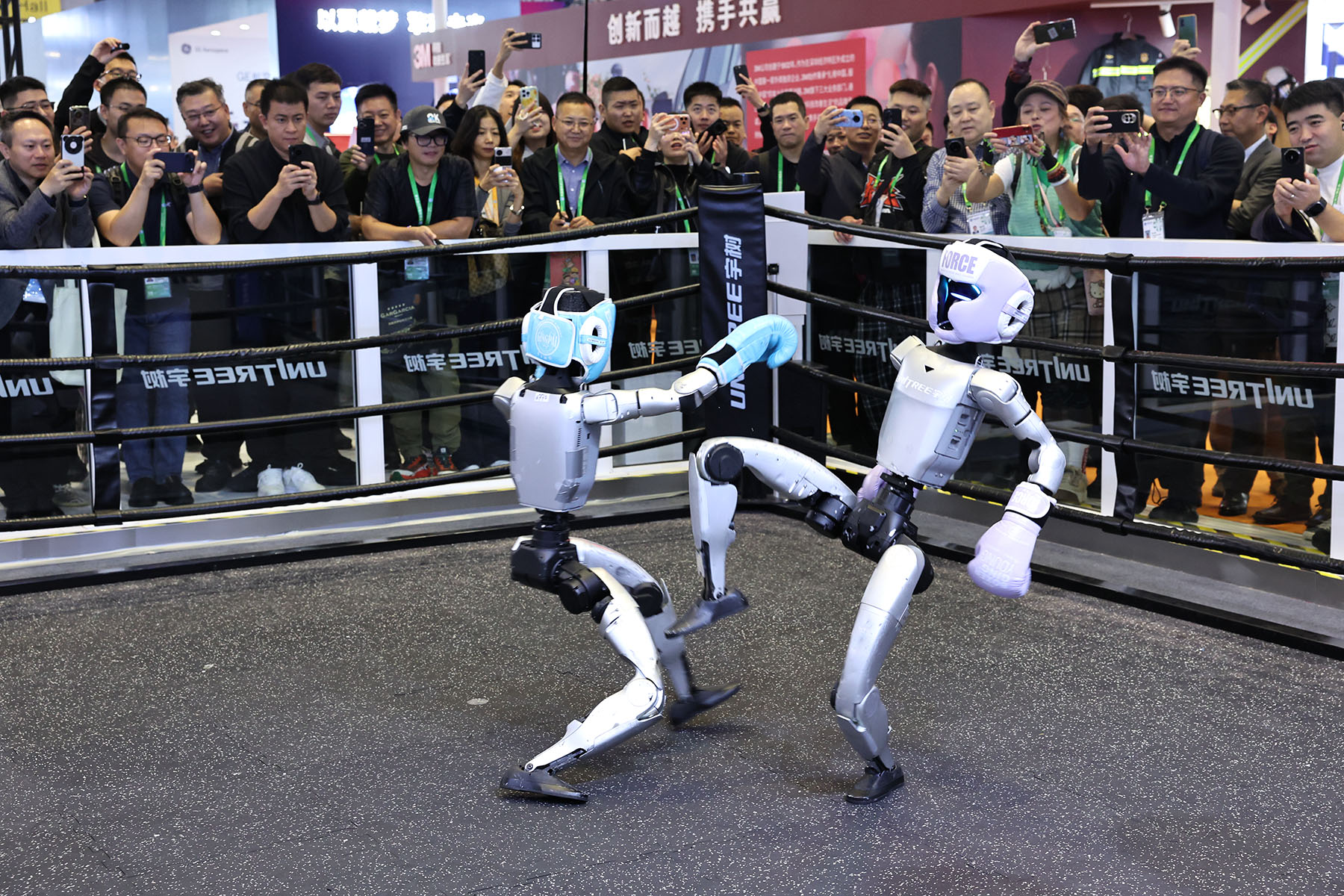Eighth CIIE attracted more than 4,000 companies from 155 countries, regions and international organizations; saw deepened cooperation and record new deals

In a global landscape marked by increasing volatility and protectionist rumblings, China sent a clear message during the recently-concluded China International Import Expo: the world's second-largest economy offers tremendous opportunities for foreign businesses, grounded in a commitment to even wider openness, executives and experts said.
The six-day event, which drew to a close on Nov 10 in Shanghai, attracted more than 4,000 companies from 155 countries, regions and international organizations with a total of 461 new products, technologies, and services making their debut.
The real measure of the expo's success, however, lay beyond the exhibition halls. It was found in the signed contracts, the deepened cooperation intentions and the reinforced relationships among a steady stream of international partners.
READ MORE: CIIE showcasing China's innovative prowess
For years, Norwegian salmon has swum into many Chinese kitchens. This year, Norway introduced its king crabs during the eighth edition of the CIIE. It marked the second type of live Norwegian crab, after snow crab last year, to gain access to China.
Plump, meaty, and rich in roe, the Norwegian brown crab — often called the king crab — has received the green light to enter the Chinese market. The announcement came on Nov 7 from Hanne-Berit Brekken, state secretary of the Norwegian Ministry of Agriculture and Food, who spoke at the Norway Pavilion of the CIIE.
"Norway has always viewed China as one of its most promising and dynamic markets," said Sigmund Bjorgo, China director of the Norwegian Seafood Council. "After five consecutive years of participating in the CIIE, China has become Norway's third-largest seafood export market globally and the fastest-growing in export value."
To capture even more of that potential, the council plans to increase its marketing budget for China by 70 percent next year, according to Bjorgo.
In a world navigating the hidden reefs of unilateralism and a thickening fog of geopolitical rivalry, the CIIE offers a tangible counter-narrative — one where openness, not isolation, is presented as the path to shared growth, said Zhou Mi, a researcher at the Chinese Academy of International Trade and Economic Cooperation.
By leveraging the vast scale and stability of the Chinese market, the expo provides a crucial platform for businesses worldwide to mitigate international volatility, Zhou added.

According to the World Openness Report 2025 released earlier this month, the World Openness Index registered a marginal decline of 0.05 percent in 2024 compared to the previous year, reflecting drops of 0.34 percent from 2019 and 5.39 percent from 2008, respectively.
"Global openness remains in a contraction phase," said Liao Fan, director of the Chinese Academy of Social Sciences' Institute of World Economics and Politics.
Europe, Central Asia and North America emerged as the only regions experiencing a contraction in openness, while emerging markets and developing economies saw their openness index rise 0.42 percent year-on-year, the report noted.
Between 1990 and 2024, China's openness index surged from 0.59 to 0.76, marking a rise of nearly 30 percent. This robust expansion underscores China's commitment to high-standard opening-up, injecting much-needed stability and certainty into the world economy, Liao said.
Faced with a protectionist wall in the West, Ron Lin, founder and president of a honey product company from Canada, and many other global business leaders are walking through a door China has always held open.
"The United States was originally our major market," said Lin. "But since the tariff hikes, we have suspended most of our orders to the US — the uncertainty there is just too strong."
"China is proactively opening its door through platforms like the CIIE," he said, highlighting not only streamlined Customs and logistics services, but also a clear and welcoming attitude he finds lacking elsewhere.
In his company's first appearance at the CIIE in 2024, it selected three flagship honey products for the Chinese market. For this year, it had prepared an even wider array of new items to test the waters.
"We are full of confidence in the potential of the Chinese market," Lin stated. "Given its population base, the Chinese market has every possibility of surpassing the US market in the long run."
The expo saw robust transaction activity, with intended deals reaching a record $83.49 billion on an annualized basis, a 4.4 percent increase from the previous edition, Wu Zhengping, deputy director-general of the CIIE Bureau, told a news conference after the conclusion of the event.
The expo has long been a showcase for global brands to present their latest products. But for a growing number of multinational firms, it has become something more strategic, a launchpad for deep integration into the Chinese economy.

This shift was crystallized on the first day of this year's expo, when Porsche opened its China R&D Center in Shanghai's Hongqiao International Central Business District, designed to accelerate local innovation by merging Porsche's engineering capability with China's fast-paced digital ecosystem.
The facility, the German automaker's first strategic-level research hub outside its home country, spans more than 10,000 square meters and integrates development, procurement, and quality control under one roof.
"China is leading the way in future mobility, combining electrification, digitalization, and new luxury concepts," said Oliver Blume, chairman of the executive board of Porsche AG.
"Solving the challenges of this transformation isn't possible from afar — it has to happen here. The China R&D is a strategic pillar that connects German engineering with China's digital future. This center will help us move faster, learn more, and strengthen Porsche R&D globally," Blume said.
The same day, pharmaceutical company AstraZeneca also announced an additional $136 million investment to expand its production and supply base in Qingdao, Shandong province, just months after unveiling a $2.5 billion plan to establish a global strategic R&D center in Beijing.
"We really see China as a strategic hub for both R&D and manufacturing," said Tony Pusic, senior vice-president of Supply Asia Pacific at AstraZeneca.
ALSO READ: CIIE displays innovation, global confidence in China
China saw the registration of 48,921 new foreign-invested firms in the first three quarters of this year, marking a year-on-year increase of 16.2 percent, according to the Ministry of Commerce. From 2021 to 2025, China attracted over $700 billion in cumulative utilized foreign investment, with 25,000 more new foreign-funded enterprises than in the previous five-year period.
The CIIE is well known for the billions of dollars in deals and investment signed on its floor. But beyond the economic handshakes, global companies arrived with tangible climate solutions.
Carolyn Mortland, executive officer for sustainability of New Zealand-based kiwifruit marketer Zespri, said that the company used the inaugural biofuel-chartered vessel during the 2025/26 season, using fuel derived from used cooking oil, reducing carbon emissions by 18 percent.
Zespri's practices and explorations in carbon reduction demonstrate that agricultural enterprises can not only adapt to climate change, but also proactively lead transformation, achieving a win-win outcome of environmental benefits and commercial value, Mortland added.
"China holds distinct strengths in new energy and logistics. We are keen to strengthen our collaboration in green transportation for the future," Mortland said.
Contact the writers at wangkeju@chinadaily.com.cn


